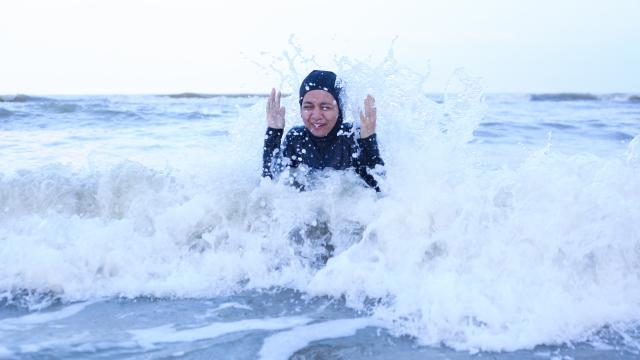General Guidance
-
If you have underlying health conditions (i.e. heart disease, asthma, lung conditions) or any other medical conditions that might be affected by exposure to cold water, or if you are pregnant, then please seek appropriate medical advice before proceeding.
-
Do not take part in the challenge under the influence of drugs or alcohol.
-
We do not recommend anyone under the age of 16 participate in the event.
-
Please check your local government guidelines surrounding coronavirus before taking part in your challenge, including any restrictions to your local area status.
-
This challenge is entirely at your own risk, so please assess your ability and safety before you participate. WWF UK shall not be liable for any injury, damage or loss to you or your property that might occur as a result of your participation.
-
We strongly advise you let friends / family know about your participation in this challenge. If you choose to take on an open water swim, never undertake this on your own.
Outdoor Swimming
-
Never take part in an outdoor swim alone and always let people know where and when you will be completing your dip. Take your mobile phone.
-
Be safe and check local advice when choosing where to swim. Check local conditions, tides and RNLI reports. You are responsible for choosing a safe location and assessing your own ability. Choosing somewhere you are familiar with and can exit the water quickly is recommended. If swimming in open water, ensure you are with someone experienced.
-
Plan your dip in daylight hours and avoid swimming in the dark.
-
Wear something you feel comfortable in that does not affect your ability to swim. Swim caps can help you retain your body heat. Wearing a wetsuit, swim gloves or swim booties can also help retain body heat too. Please make sure you do not wear anything that will become too heavy to swim in when it gets wet.
-
When entering the water, allow yourself time to acclimatise to the cold by entering slowly. Do not jump in. Only go into water as far as you can stand. Don’t put yourself in unnecessary danger by going into deep water.
-
Swim gently at first, allowing time to overcome the shock and shallow breathing which is a normal reaction to the cold water.
-
If you feel very cold, disorientated or dizzy seek help immediately.
-
There is no set time limit for your cold dip. Start small, build up gradually, and never go beyond your comfort zone.
-
Remember, if open water swimming other vehicles and boats may be using the water too. Wear bright colours so you are easy to see.
- After your swim, warm up gradually. Pat yourself dry and put on warm, dry layers – you could even make a warm drink. Avoid standing around and move to a warm location. Do not drive until you feel well.
Ice Baths
-
Please let your family / friends know you are taking on this challenge, particularly if you are taking part alone at home. Ensure you know where to go for help should you need it.
-
Your ice bath could be undertaken in a bath or paddling pool set up at home.
-
There is no set time limit for your ice bath. Start small, build up gradually, and never go beyond your comfort zone.
-
If you feel very cold, disorientated or dizzy seek help immediately.
-
After your ice bath, warm up gradually. Pat yourself dry and put on warm, dry layers - you could even make a warm drink.
Cold Showers
-
Please let your family / friends know you are taking on this challenge, particularly if you are taking part alone at home. Ensure you know where to go for help should you need it.
-
There is no set time limit for your cold shower. Start small, build up gradually, and never go beyond your comfort zone.
-
If you feel very cold, disorientated or dizzy seek help immediately.
-
After your cold shower, warm up gradually. Pat yourself dry and put on warm, dry layers - you could even make a warm drink.
